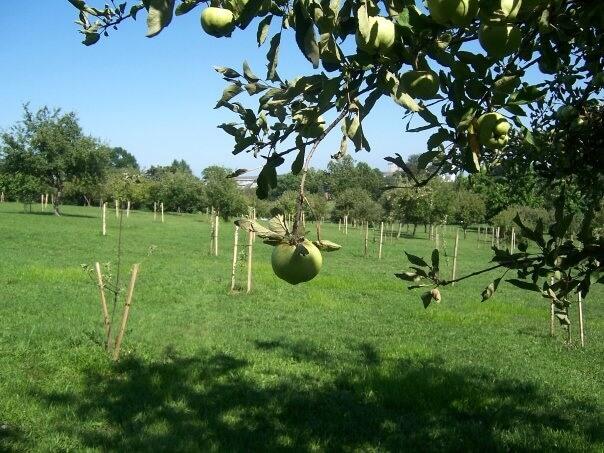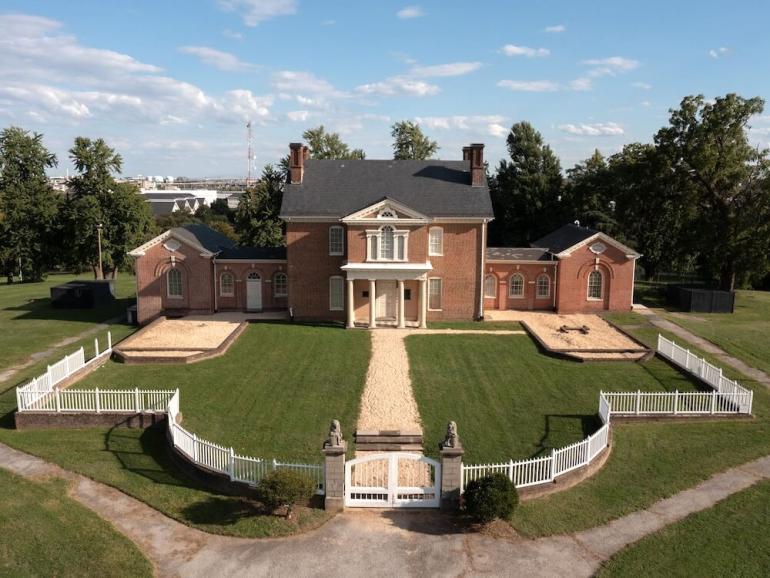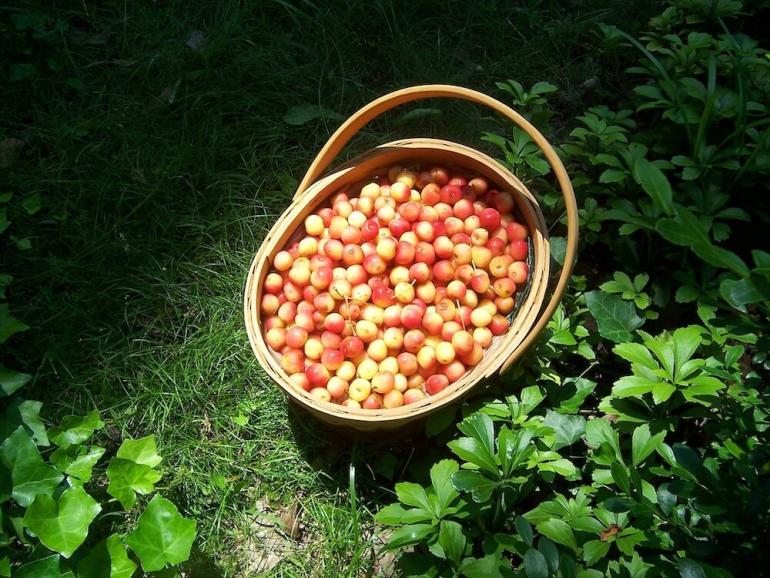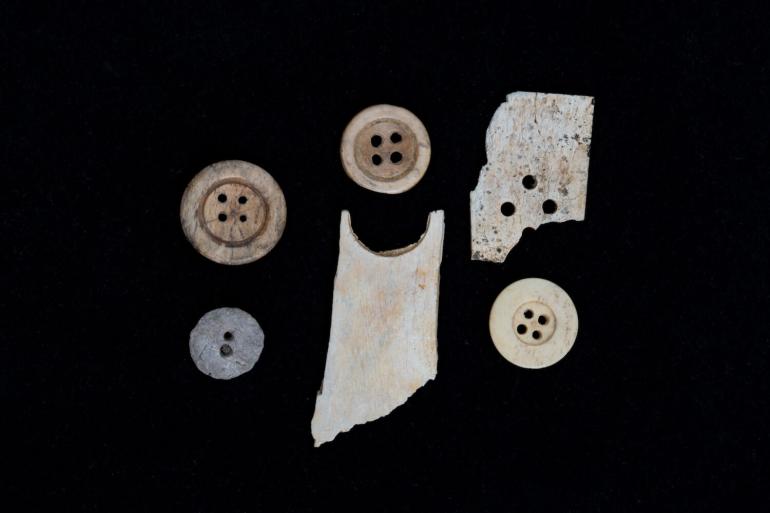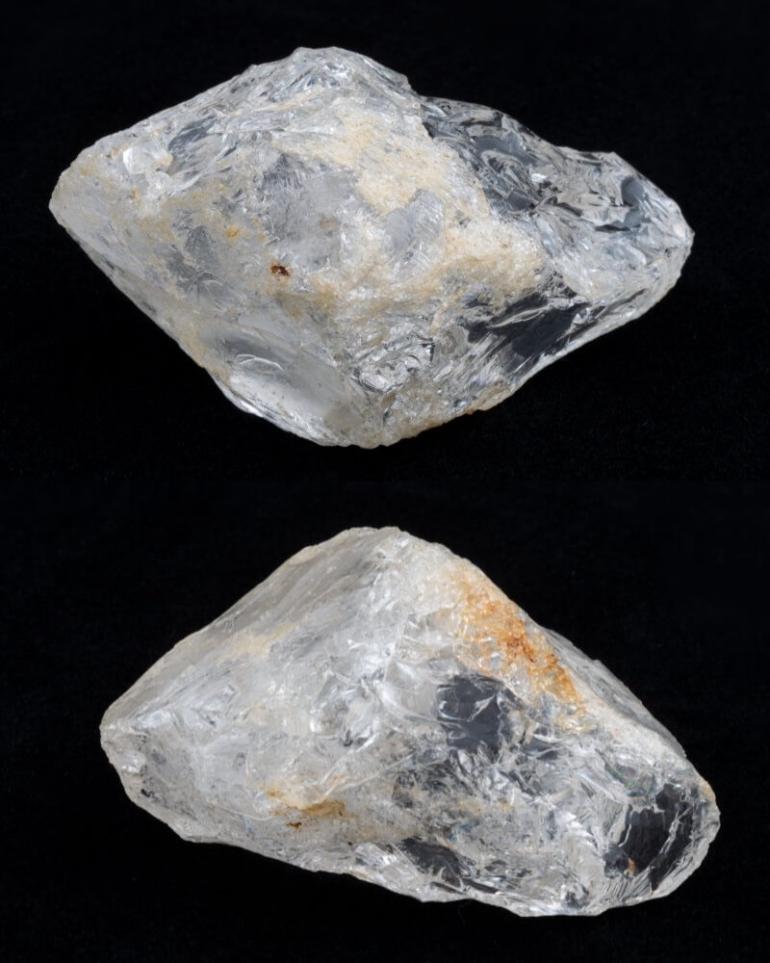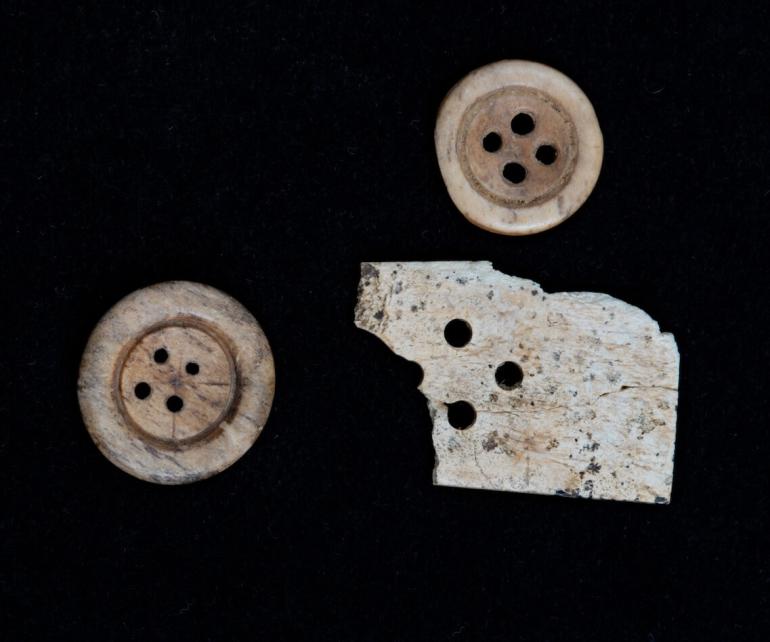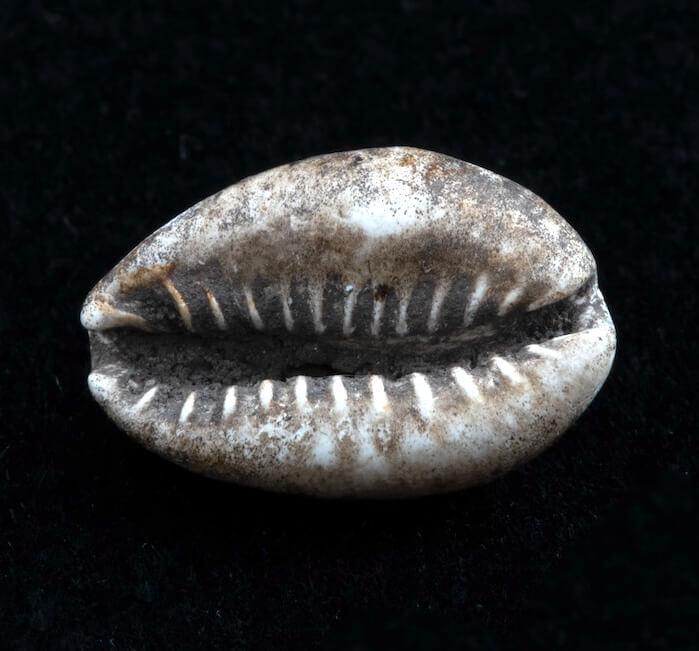Exposed foundations of Mount Clare’s Orangery, circa 1989. Courtesy of the Baltimore Center for Urban Archeology.
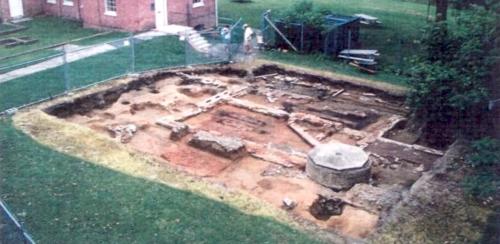
Archaeology
Archeological explorations have taken place at Mount Clare for more than 30 years. Excavations uncovered the foundations of the original outbuildings, including the orangery, kitchen, and office wings. Through meticulous historical and archeological analysis, the forecourt and fence were reconstructed, the bowling green was rebuilt, the falling terraces regraded, and the orchard replanted.
Artifacts
The archeological artifacts discovered offer important but incomplete glimpses of the lives of Mount Clare’s inhabitants, including the enslaved people and indentured servants who worked and lived here. Very little material evidence has surfaced about Mount Clare’s unpaid laborers, including the location of their living quarters.
Crystal
A rare artifact believed to be a spiritual object belonging to an enslaved person was discovered at Mount Clare in 1986. During excavations of the original kitchen, archeologists discovered a 4-inch, heavily worked colorless crystal along with a sherd of a Chinese porcelain bowl, a piece of clear glass, and some wrought iron nails. Initially thought to be a random grouping, the cache of objects was later identified by archaeologist George Logan as an intentionally buried object.
Archeologists believe the objects were part of a medicinal bundle, known as a nikisi, that stems from West African spiritual practices. It was buried in the doorway of the kitchen around 1760 by an enslaved person looking to invoke some spiritual power or protection imbued in the bundle. These types of bundles have been discovered at hundreds of colonial sites in America, usually buried near hearths or in the corners of enslaved peoples quarters. They likely demonstrate spirituality being used to empower individuals against the daily hardship of plantation life.
Several bone buttons and blanks were discovered at Mount Clare. The enslaved had to manufacture their own clothing and made bone buttons in the absence of metal buttons. Cow and pig bones were soaked in water, vinegar, or soda ash to make them more malleable and then were cut with a machete or other sharp tool into thin, flat sheets. A metal tool called a bit would be pressed into the flat bone and then turned to carve out a circular disc, which would then be polished. The remnants of bone with holes are called button blanks.
Cowrie shell
At least one cowrie shell was found during the excavations. Cowrie shells come from snail-like creatures that live in the tropical waters of the Indian and Pacific Oceans. For thousands of years cowries have been used in rituals, as ornamentation in jewelry and clothing, and even as currency in South Asian and African cultures. They have been associated with womanhood, fertility, wealth, and birth. Cowries were imported, often as “packing peanuts” for export china from South Asia, and then used by Europeans to purchase kidnapped, enslaved individuals from coastal West African people. This cowrie is tangible evidence that enslaved people carried part of their African identity with them across the Atlantic.

